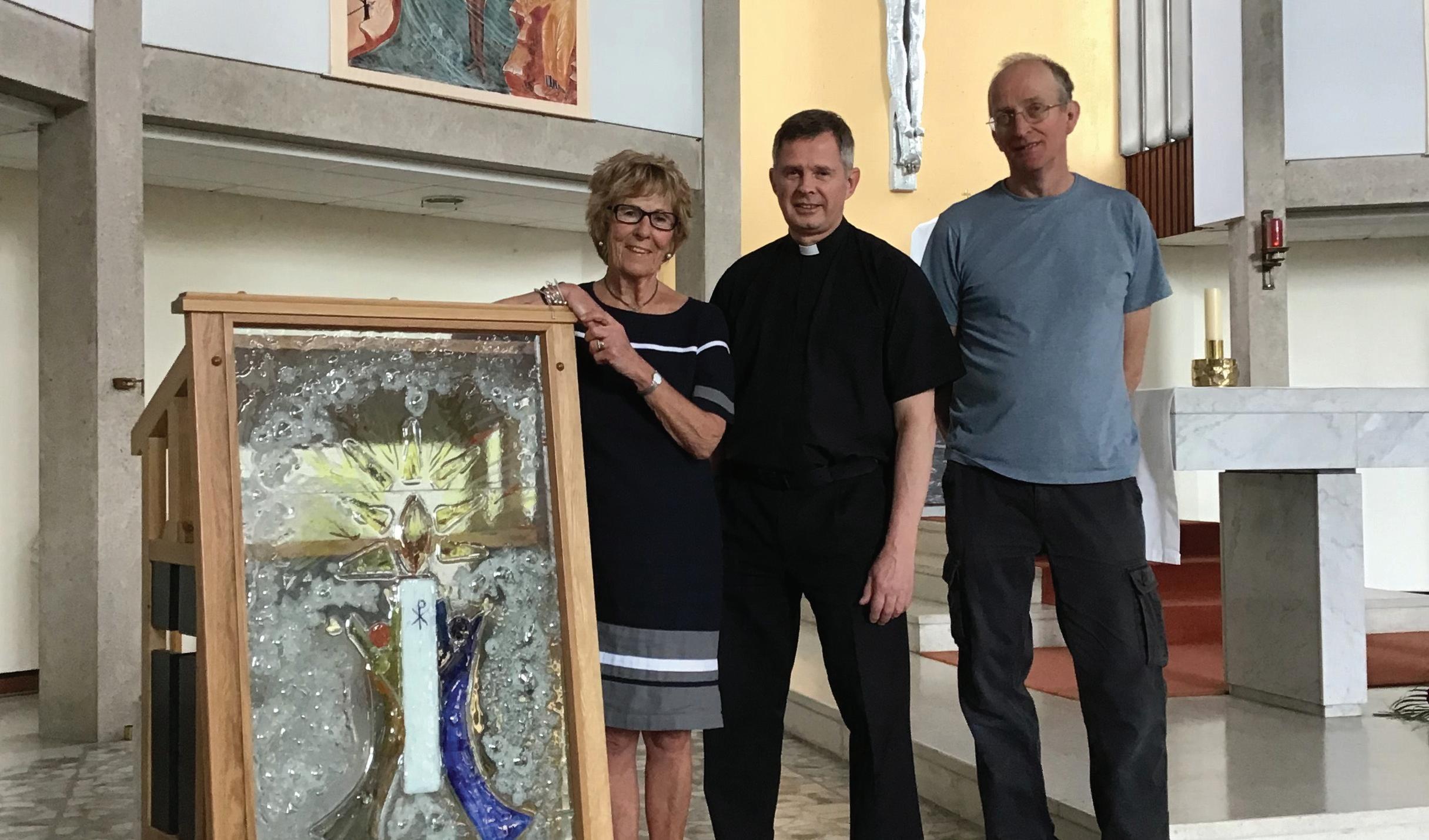
3 minute read
Profile
Trisha Wilson & Mary Heaton

Advertisement
Exploring the Synod themes within their parish by Simon Hart
There is a chuckle from Trisha Wilson as she describes the theme of the glasswork she created of the Synod 2020 logo, now adorning the lectern at St Teresa’s parish church in Penwortham. ‘Stupid old woman takes on this job which nearly kills her!’ she laughs. The job in question is that of Synod parish member for St Mary Magdalen and St Teresa, the combined parish in Leyland on the northern edge of our Archdiocese.
It is a role to which the retired headteacher and glass-fusing enthusiast was elected in the autumn of 2018 when her parish’s Synod support group embarked on the process of considering the four themes of Liverpool Archdiocese’s Synod 2020 process: ‘All called and gifted by God’; ‘Sharing the mission of Jesus’; ‘How we pray together’; and ‘Building community, nurturing belonging’.
‘We didn’t know what we were taking on, nobody did,’ she says of her 23-strong group of parishioners. ‘There were varying degrees of interest within our community varying from curiosity, enthusiasm and scepticism to interest and a desire to work to further the faith life of our parish.’
The support of John Sargent, Synod member for their pastoral area, helped as did as a series of reflective meetings using materials from the Synod website as the group considered the four themes in turn, compiling a list of five proposals for each. She adds: ‘Our small discernment team found themselves humbled and amazed at how well we worked prayerfully together to generate the proposals.’
The desire for more answers led some of them to embark on the diocesan Faith For Life course. ‘As things have opened up, they’ve realised a narrow outlook is not enough – they need to embrace other schools of thought,’ says Trisha.
‘One challenge in any group is the fact we’re all coming at it from different directions,’ adds Mary Heaton, a retired civil servant and lifelong parishioner. Yet she was heartened by the fact ‘people have kept saying what they really believed’. Her uncle John Dover was parish sacristan for 40 years and Mary is now more optimistic about the future of a place she now knows even better through her involvement with the group. ‘There’s a new generation coming along and it’s nice to know. I’ve got to know people I’d see at church but we never spoke. This has made sure we’ve got a cluster of people and some of them are younger and will take things forward.’
Younger, but not necessarily young – the parishioners involved range in age from their 40s to their 70s. It is a concern for both women. ‘An endeavour to reach out to young parents failed,’ says Trisha of the challenge of ‘reaching out to the youth’. She goes on: ‘People feel very strongly that they’ve failed their children because they haven’t been able to pass on the fullness of their faith and are looking for ways they could include them. That’s a big, big issue and the realisation we could be accepting them just as they are.’
Mary wonders: ‘Do we need more social groups to encourage young people? There are those who perhaps we’re never going to get to come to church every Sunday but who could well be part of the community.’
This question is at the core of this parish group’s considerations but it is not the only one. Summing up the fruits of their reflections, Trisha says: ‘I feel that several thoughts were repeated throughout the whole process – Youth liturgy, women’s role in the Church, opportunities for spiritual growth in our parishes, and a return to traditional Catholic devotions.’










